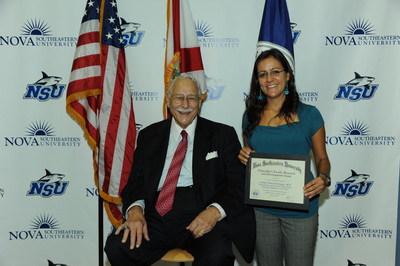Reproduction and Spread of Cliona delitrix Excavating Sponge on Coral Reefs
Grant Winners
- Jose Lopez, PhD – Oceanographic Center
- Jay Fleisher, PhD – College of Osteopathic Medicine
- Andia Chaves-Fonnegra, MS – Oceanographic Center
Deans
- Richard Dodge, Ph.D. – Oceanographic Center
- Anthony Silvagni, PhD – College of Osteopathic Medicine
Abstract

Sponges are common and important residents of benthic habitats that compete for the same space as reef-building corals. The genus Cliona are known for "boring", or excavating into live coral substrate, being able to kill and overpower complete coral colonies. Cliona populations on Florida reefs appear to be increasing noticeably over the past few decades, an aspect that may be related to environmental disturbance, such as pollution and climate change. To understand how Cliona populations may spread, we propose to a) characterize sexual reproduction (type of reproduction, time when eggs are released, number of eggs [fecundity], and temperature effects) of Cliona delitrix sponge; b) determine the potential settling of sponge larvae (e.g. recruitment) and their substrate preferences onto natural and artificial substrates on reefs and c) collect samples of excavating sponges to determine their potential dispersal (that will be measured by a complementary population genetics approach) on Florida reefs. To evaluate sponge reproduction, samples of sponge tissue will be collected every month (for 1 year), fixed and analyzed by standard histological methods. Recruitment preferences and survival will be determined by quantifying sponge larvae on natural live and deteriorated corals for 1 year, and through quantitative experiments: clearing off dead coral surfaces and placing artificial calcium carbonate plates on the reef. To determine how temperature affects the sponge reproductive cycle a multiple least squares linear regression will be applied. Simple T-test procedures and Chi-square will be used to determine substrate preferences and recruits survival on natural substrates and in each experiment.